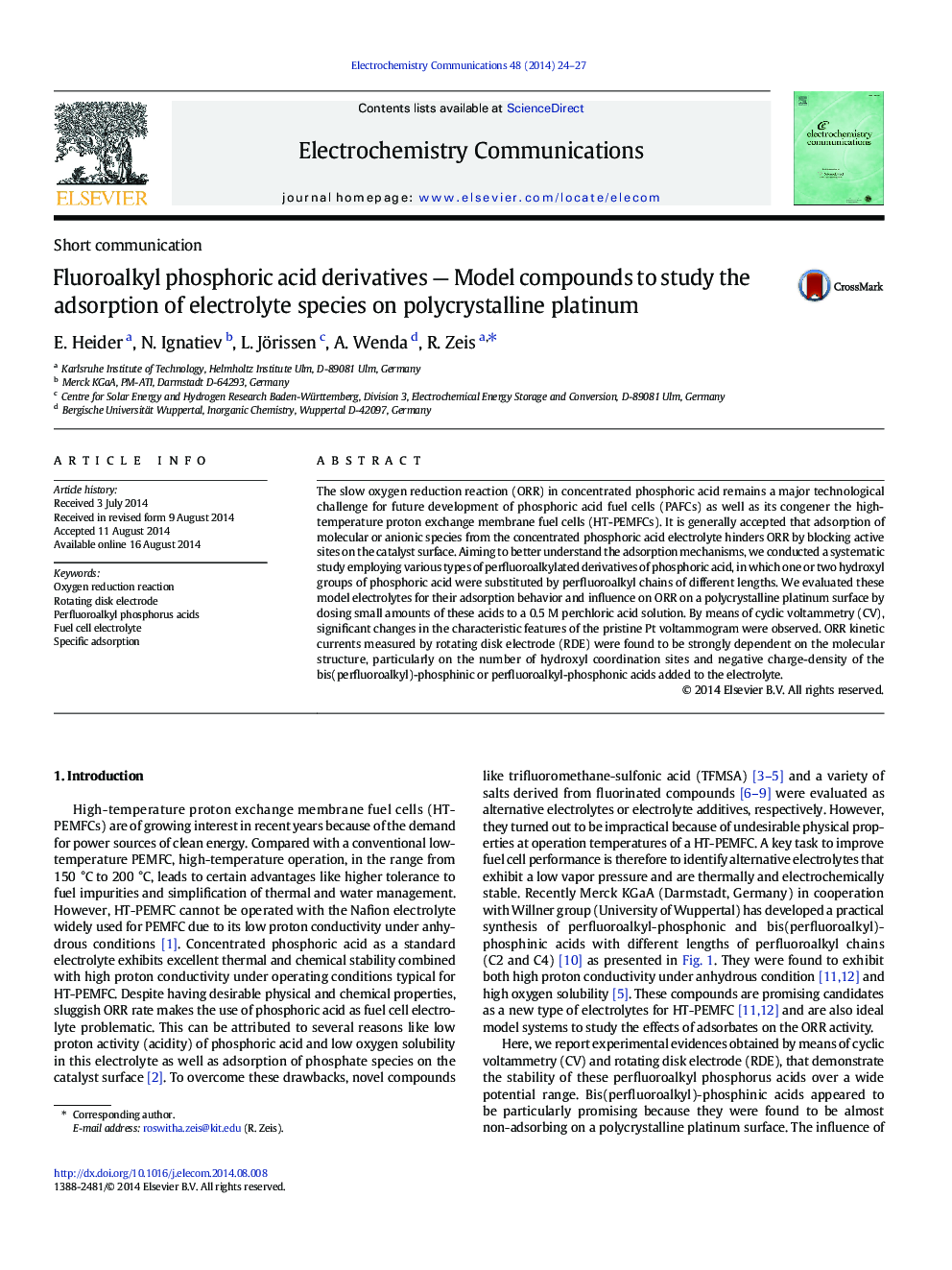| Article ID | Journal | Published Year | Pages | File Type |
|---|---|---|---|---|
| 6601368 | Electrochemistry Communications | 2014 | 4 Pages |
Abstract
The slow oxygen reduction reaction (ORR) in concentrated phosphoric acid remains a major technological challenge for future development of phosphoric acid fuel cells (PAFCs) as well as its congener the high-temperature proton exchange membrane fuel cells (HT-PEMFCs). It is generally accepted that adsorption of molecular or anionic species from the concentrated phosphoric acid electrolyte hinders ORR by blocking active sites on the catalyst surface. Aiming to better understand the adsorption mechanisms, we conducted a systematic study employing various types of perfluoroalkylated derivatives of phosphoric acid, in which one or two hydroxyl groups of phosphoric acid were substituted by perfluoroalkyl chains of different lengths. We evaluated these model electrolytes for their adsorption behavior and influence on ORR on a polycrystalline platinum surface by dosing small amounts of these acids to a 0.5Â M perchloric acid solution. By means of cyclic voltammetry (CV), significant changes in the characteristic features of the pristine Pt voltammogram were observed. ORR kinetic currents measured by rotating disk electrode (RDE) were found to be strongly dependent on the molecular structure, particularly on the number of hydroxyl coordination sites and negative charge-density of the bis(perfluoroalkyl)-phosphinic or perfluoroalkyl-phosphonic acids added to the electrolyte.
Related Topics
Physical Sciences and Engineering
Chemical Engineering
Chemical Engineering (General)
Authors
E. Heider, N. Ignatiev, L. Jörissen, A. Wenda, R. Zeis,
